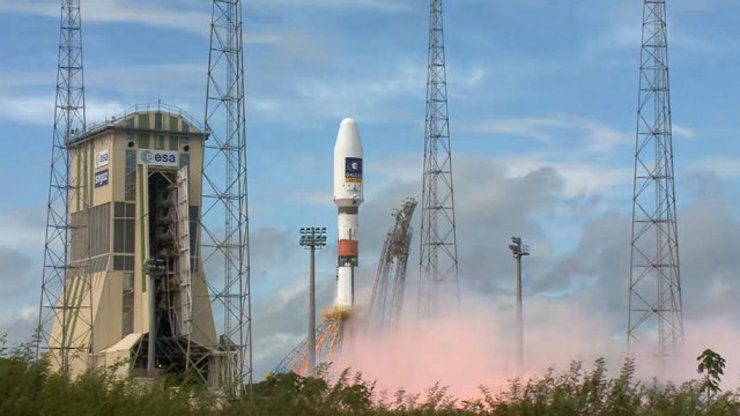SUMMARY
This is AI generated summarization, which may have errors. For context, always refer to the full article.

PARIS, France – Two European Galileo satellites fired into space by a Russian-built rocket on Friday, August 22 from French Guiana failed to reach their intended orbit, launch firm Arianespace said Saturday, August 23,
“Observations taken after the separation of the satellites from the Soyuz VS09 (rocket) for the Galileo Mission show a gap between the orbit achieved and that which was planned,” the company said in a statement.
“They have been placed on a lower orbit than expected. The teams of industries and agencies involved in the early operations of the satellites are investigating the potential implications on the mission,” it added.
Arianespace declined to comment on whether their trajectories can be corrected.
The 5.4 billion euro ($7.2 billion) Galileo constellation is designed as an alternative to the existing US Global Positioning System (GPS) and Russia’s Glonass, and will have search-and-rescue capabilities.
The satellites Doresa and Milena took off from the Kourou space centre in French Guiana at 1227 GMT Friday after a 24-hour delay because of poor weather.
Minutes later the rocket shed its four boosters and faring – the nose cone that protects the craft in the early stages of flight.
The satellites separated from the mothership to enter into free-flight orbit as planned just under four hours after launch.
“These two satellites are the first of a new type of satellite that are fully owned by the EU, a step towards a fully fledged European-owned satellite navigation system,” the European Commission, which funds the project, said Friday.
‘Technical difficulties’
Four Galileo satellites have been launched previously – one pair in October 2011 and another a year later.
They are the nucleus of the constellation orbiting Earth at an altitude of 23,500 kilometers (14,600 miles), and will later be brought to full operational capability.
The launch of the latest pair, named by two European schoolchildren who had won a drawing competition, had been delayed for over a year due to what the European Space Agency (ESA) described as “technical difficulties in the setting up of the production line and test tools”.
Launch firm Arianespace said Thursday it had signed a deal with the ESA to launch 12 more satellites “from 2015 onwards.”
In March last year, the agency announced the first four test satellites had passed a milestone by pinpointing their first ground location, with an accuracy of between 10 and 15 meters (32 to 49 feet).
For its ninth liftoff from Guiana Friday, the Soyuz rocket carried a total load of 1.6 tonnes, including the two satellites weighing 730 kilos (1,600 pounds) each.
“We are extremely proud to have sent the first two operational satellites in the Galileo constellation into orbit today,” Arianespace chairman Stephane Israel said in a Friday statement.
High precision
Two new satellites will be launched at the end of 2014, when initial Galileo services were expected to begin. It is unclear whether Saturday’s orbit “anomaly” will affect this schedule.
The Galileo constellation is scheduled to have 24 operational satellites by 2017, with six backups to join the fleet at a later date.
Operating at a higher altitude than GPS, Galileo’s satellites have a stronger signal and higher inclination angle, providing better ground visibility, particularly in built-up areas.
They are also equipped with the most accurate atomic clocks ever used in navigation, with a precision of one second in three million years.
Ultra-precise time measurement is crucial in satellite navigation, as calculations are based on the length of time it takes a signal to reach ground stations. An error of just one billionth of a second can lead to a positioning deviation of several dozen centimeters back on Earth. – Rappler.com
Add a comment
How does this make you feel?
There are no comments yet. Add your comment to start the conversation.